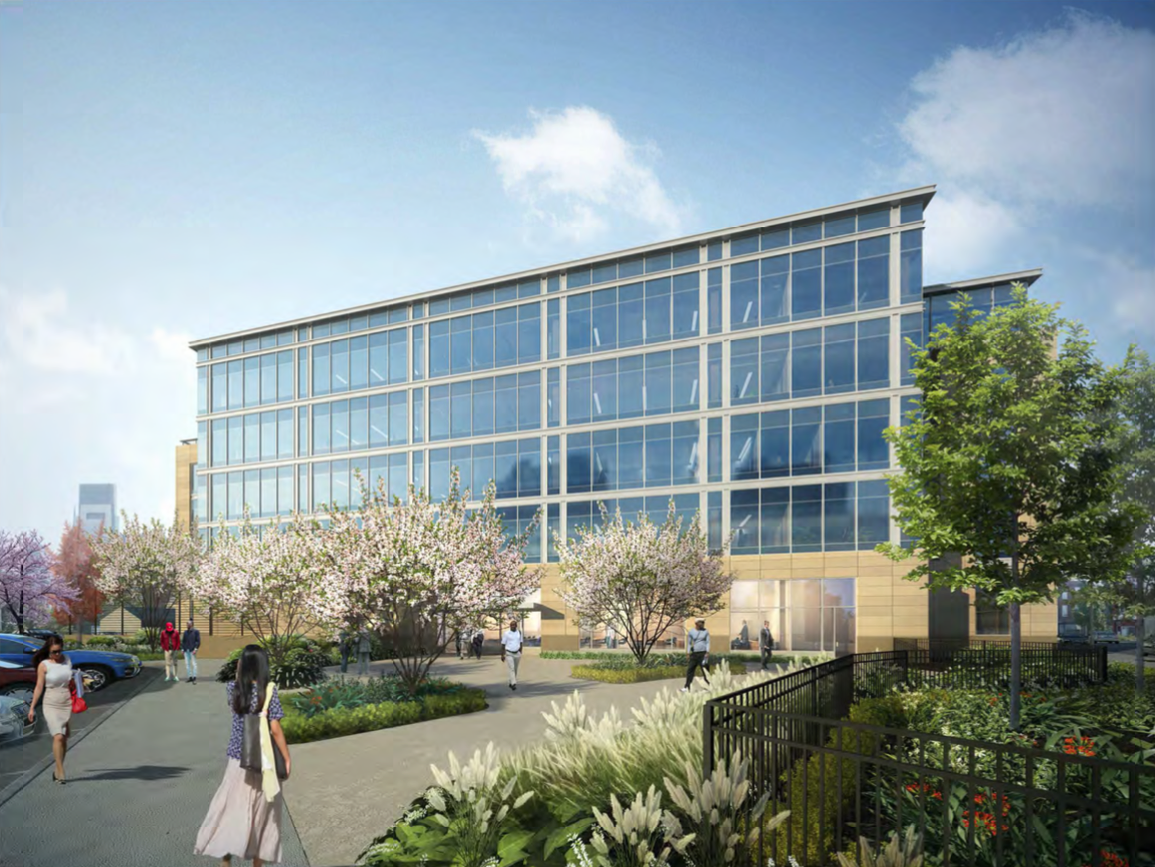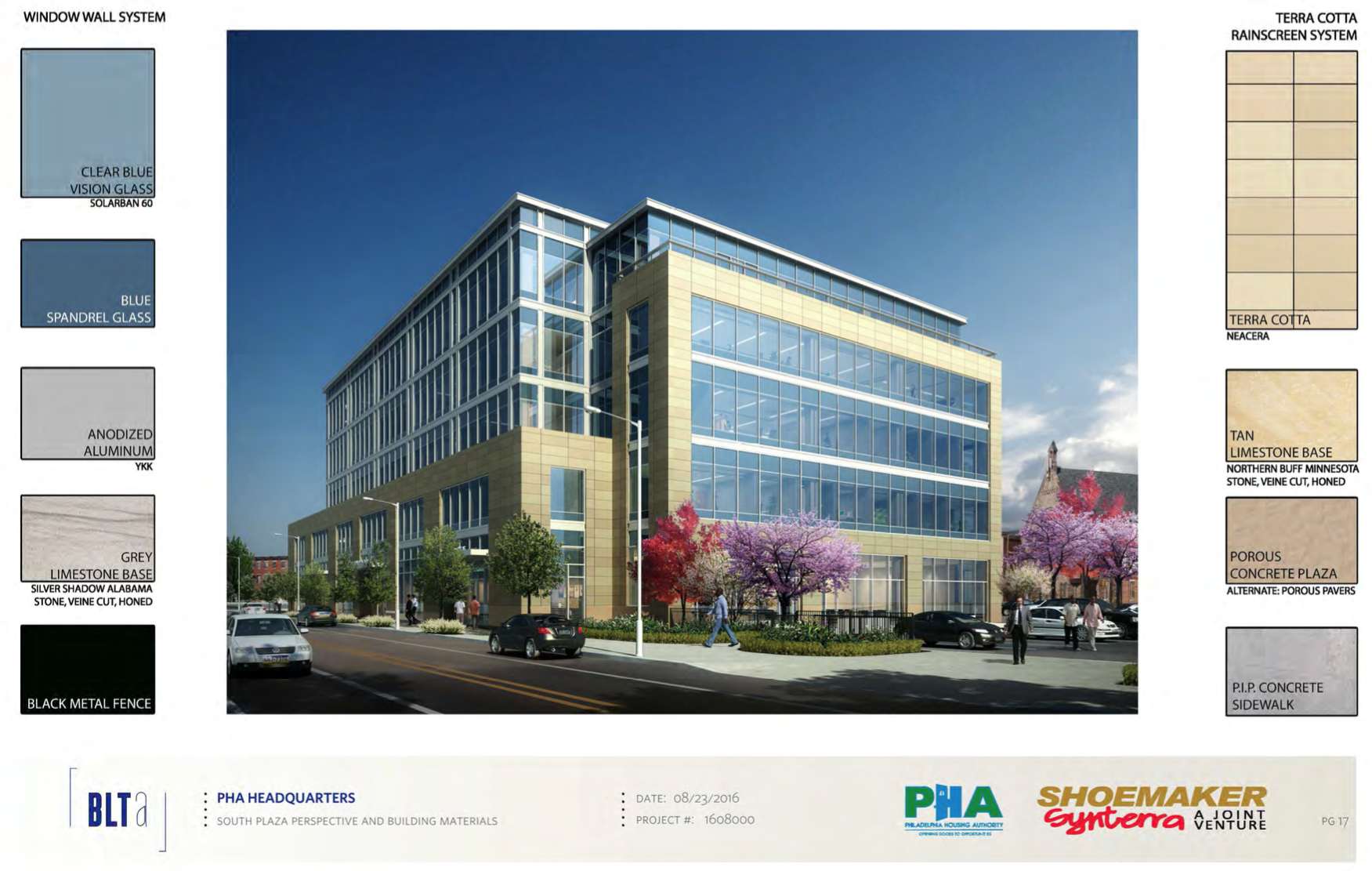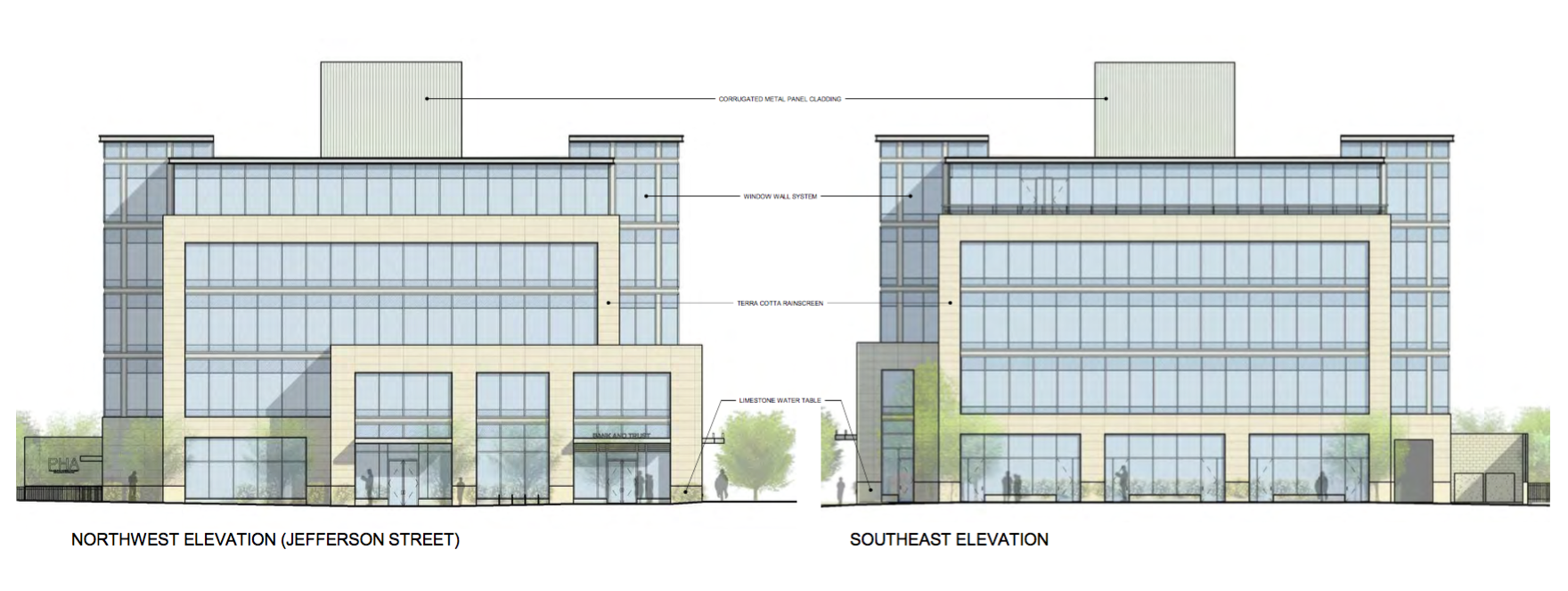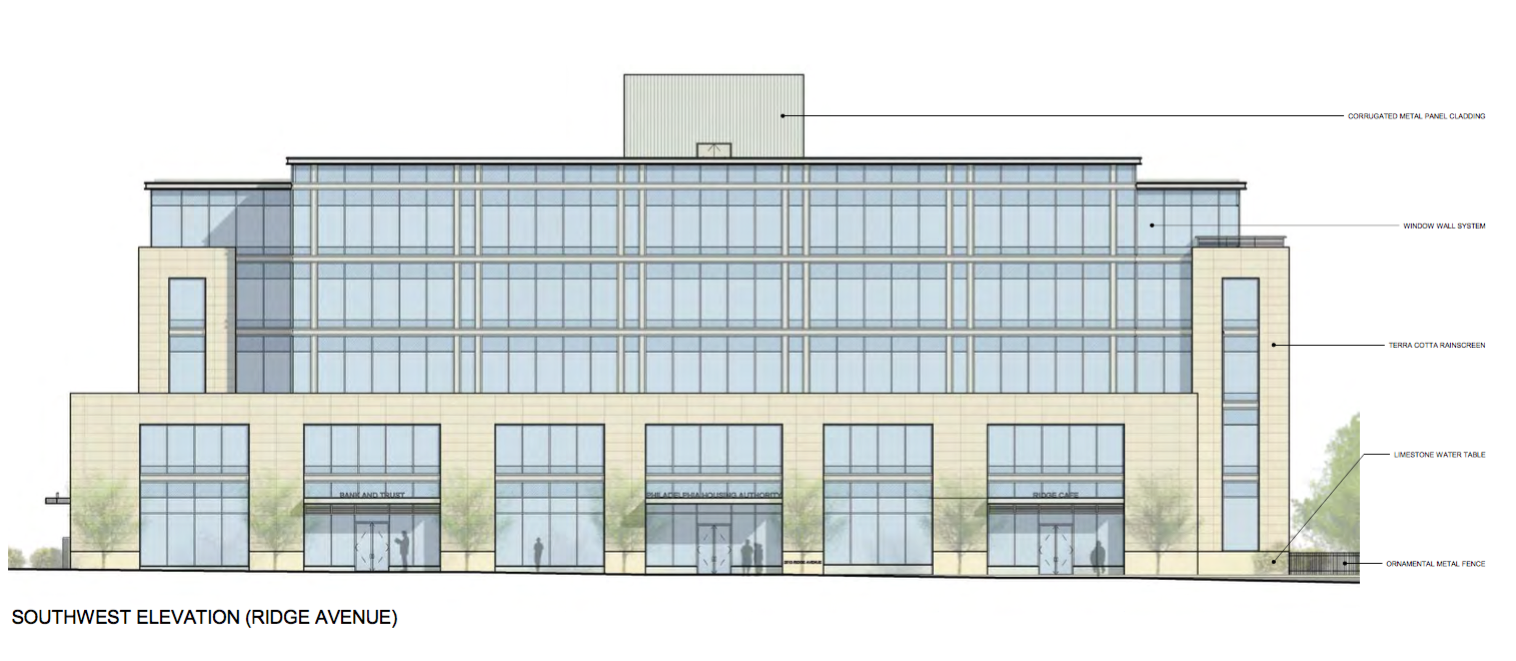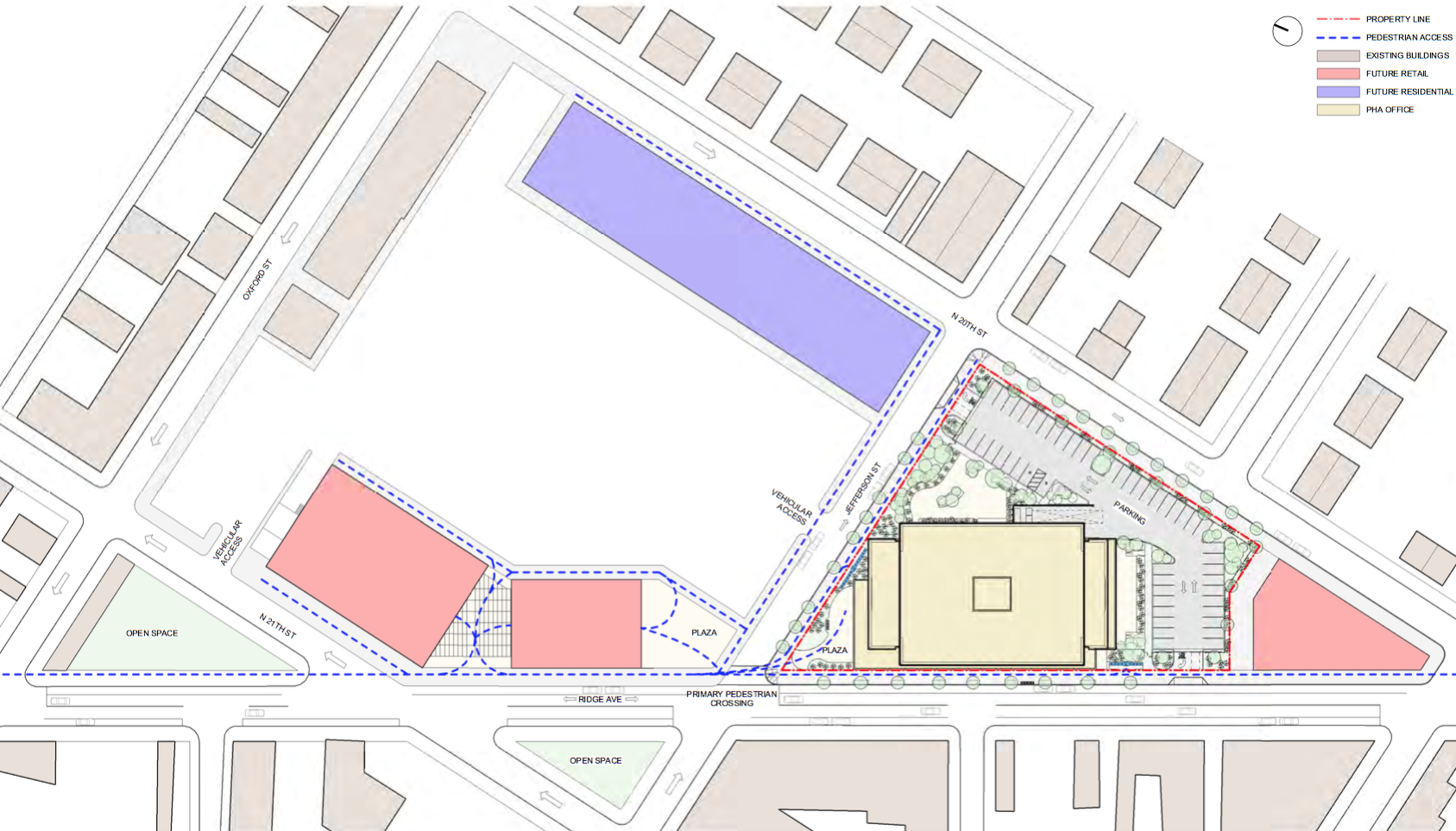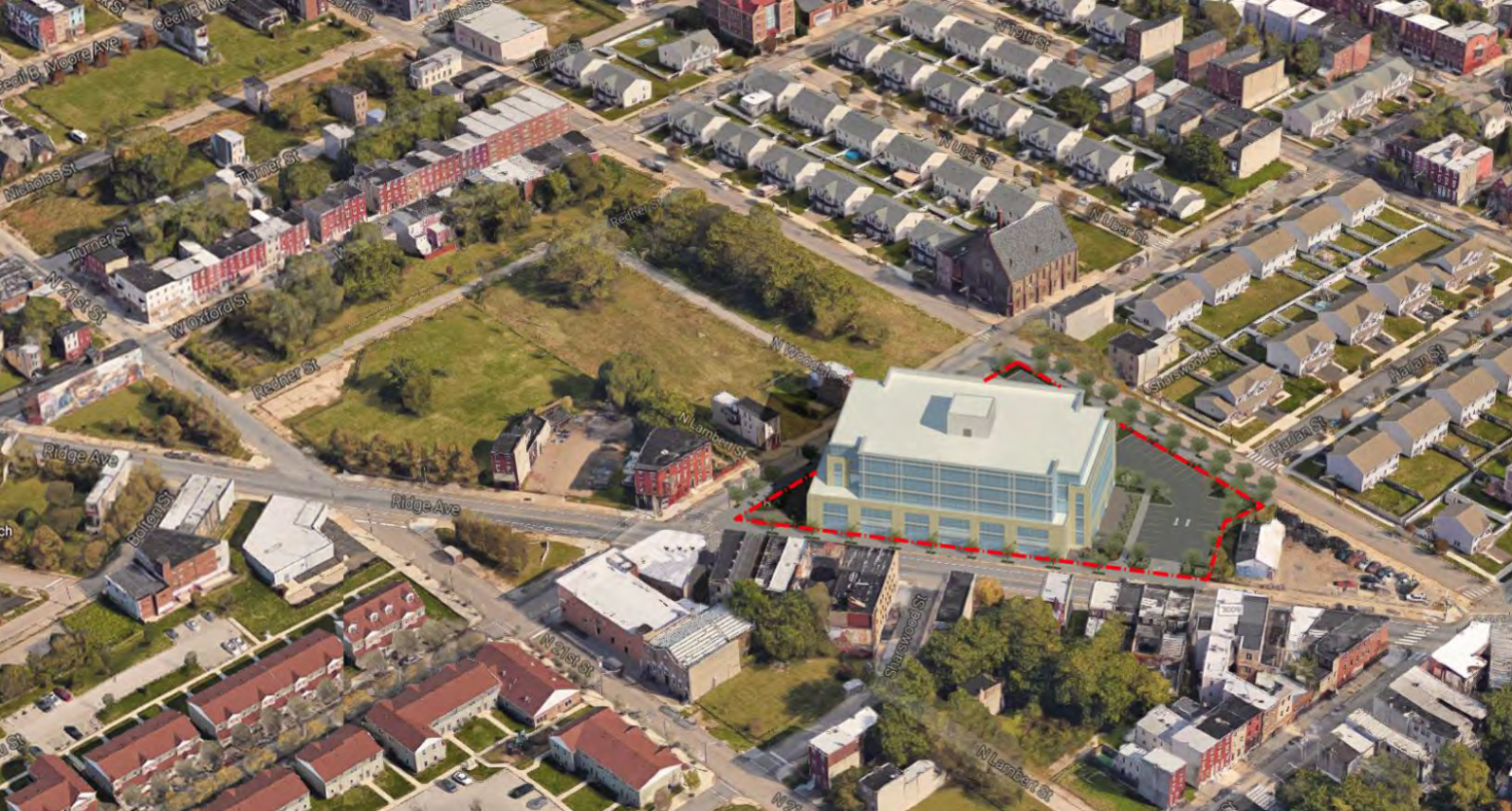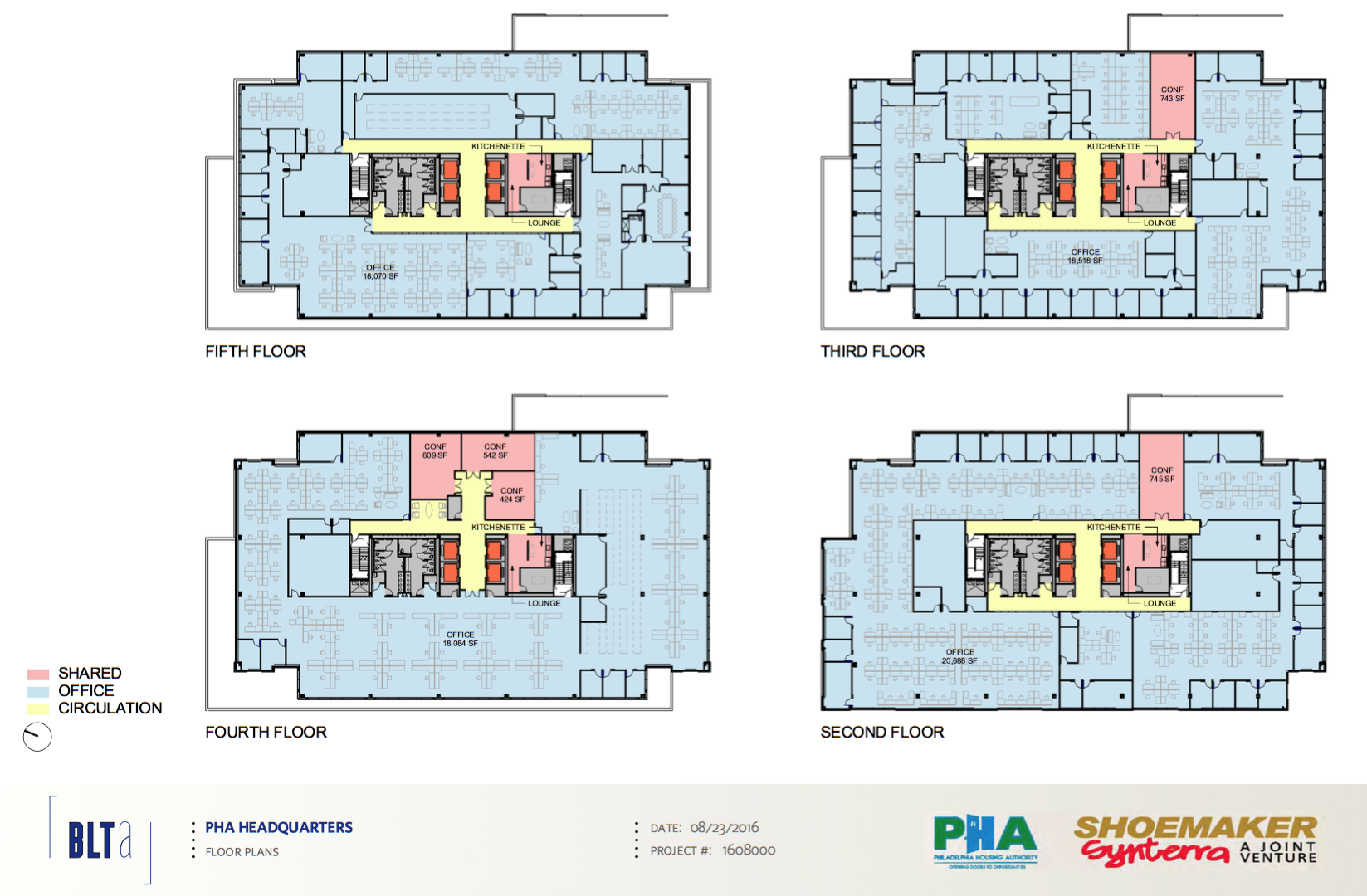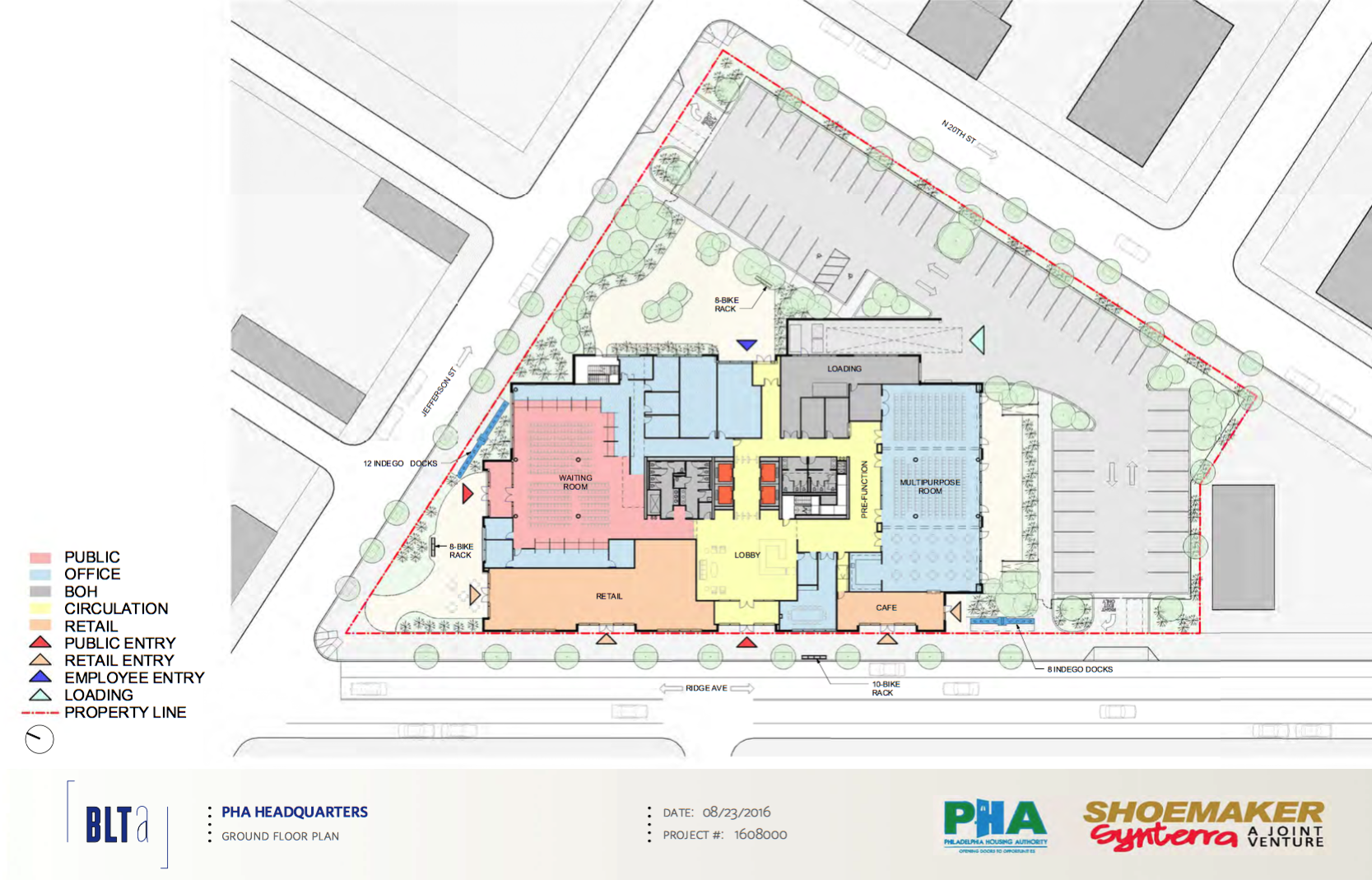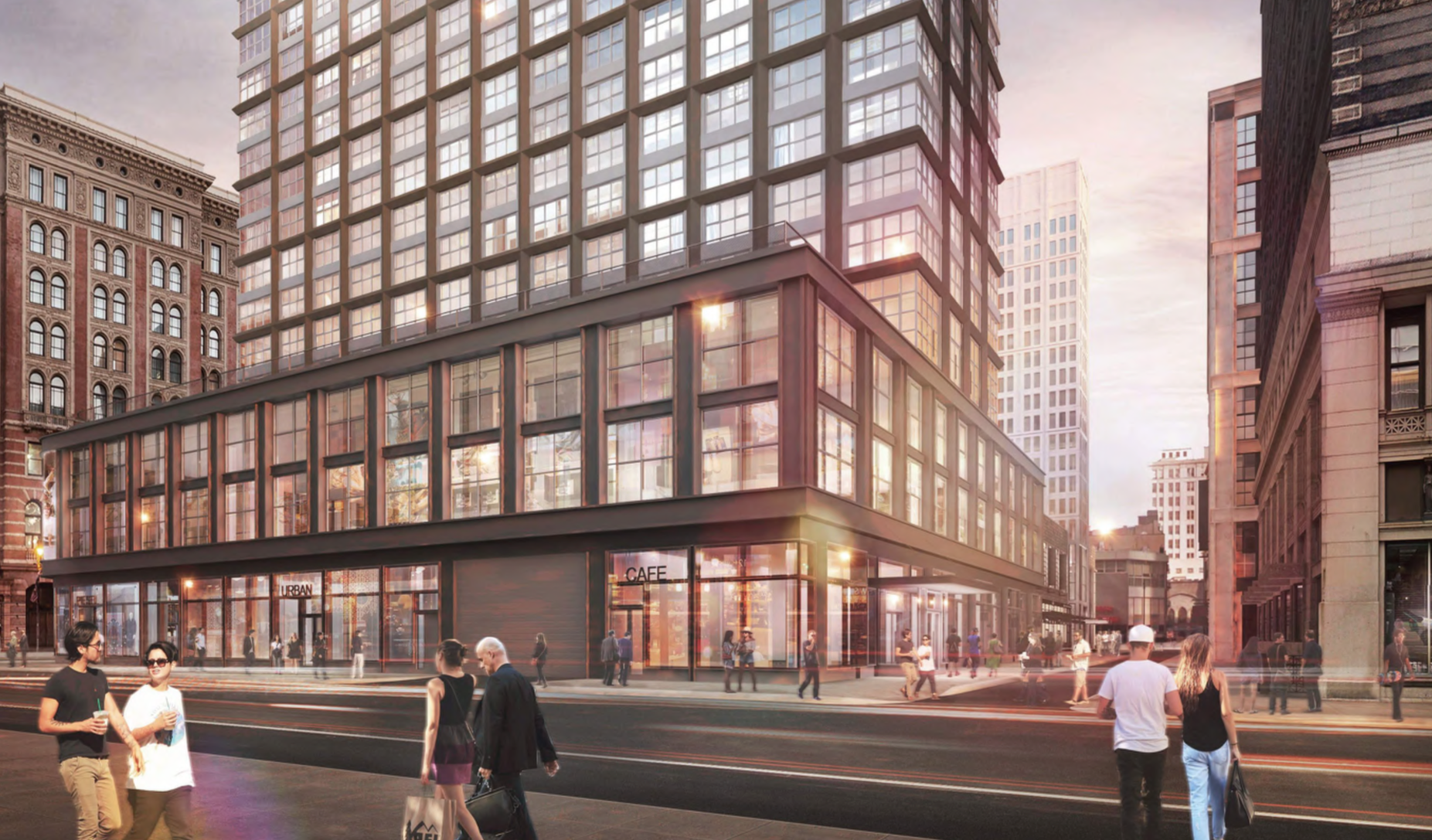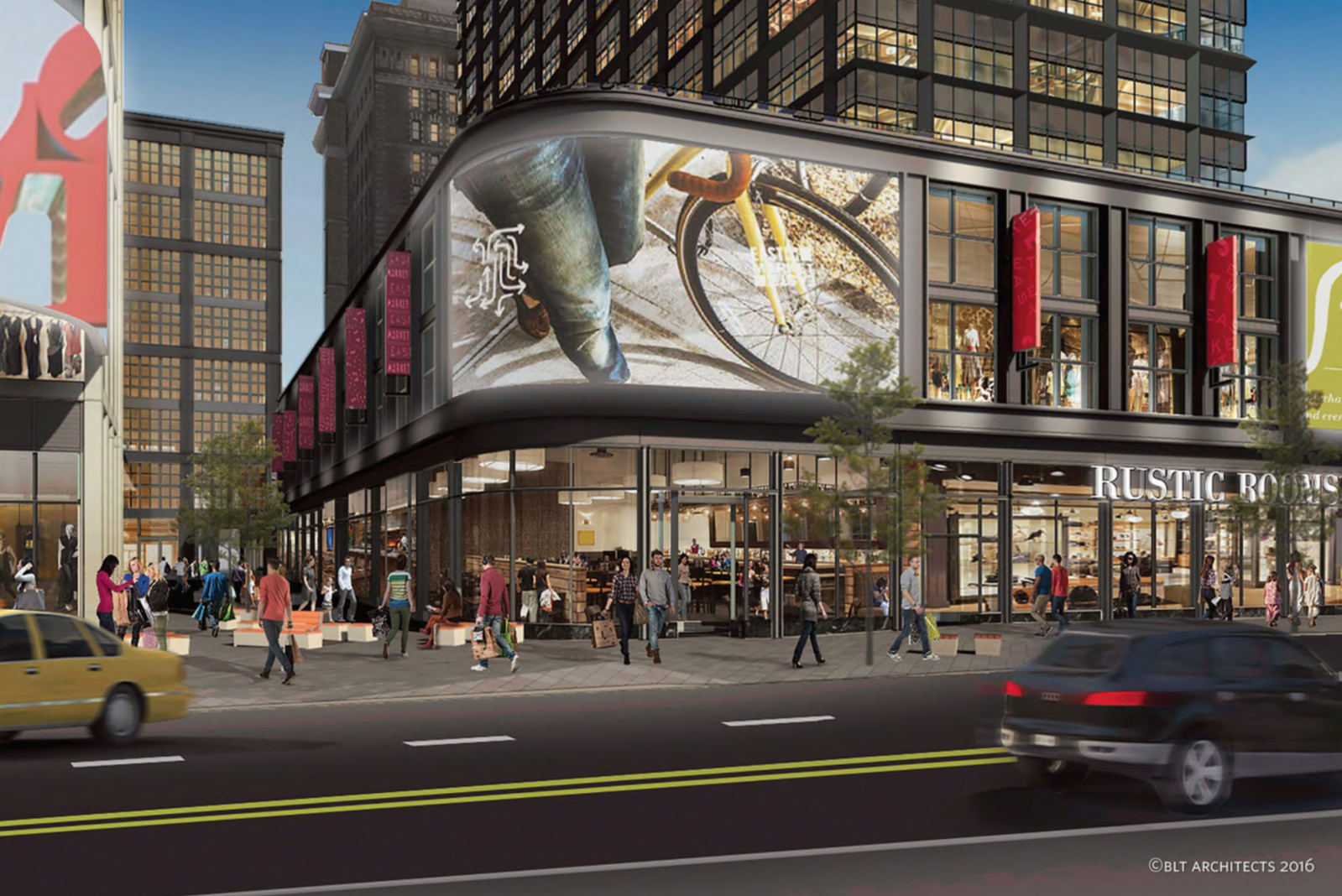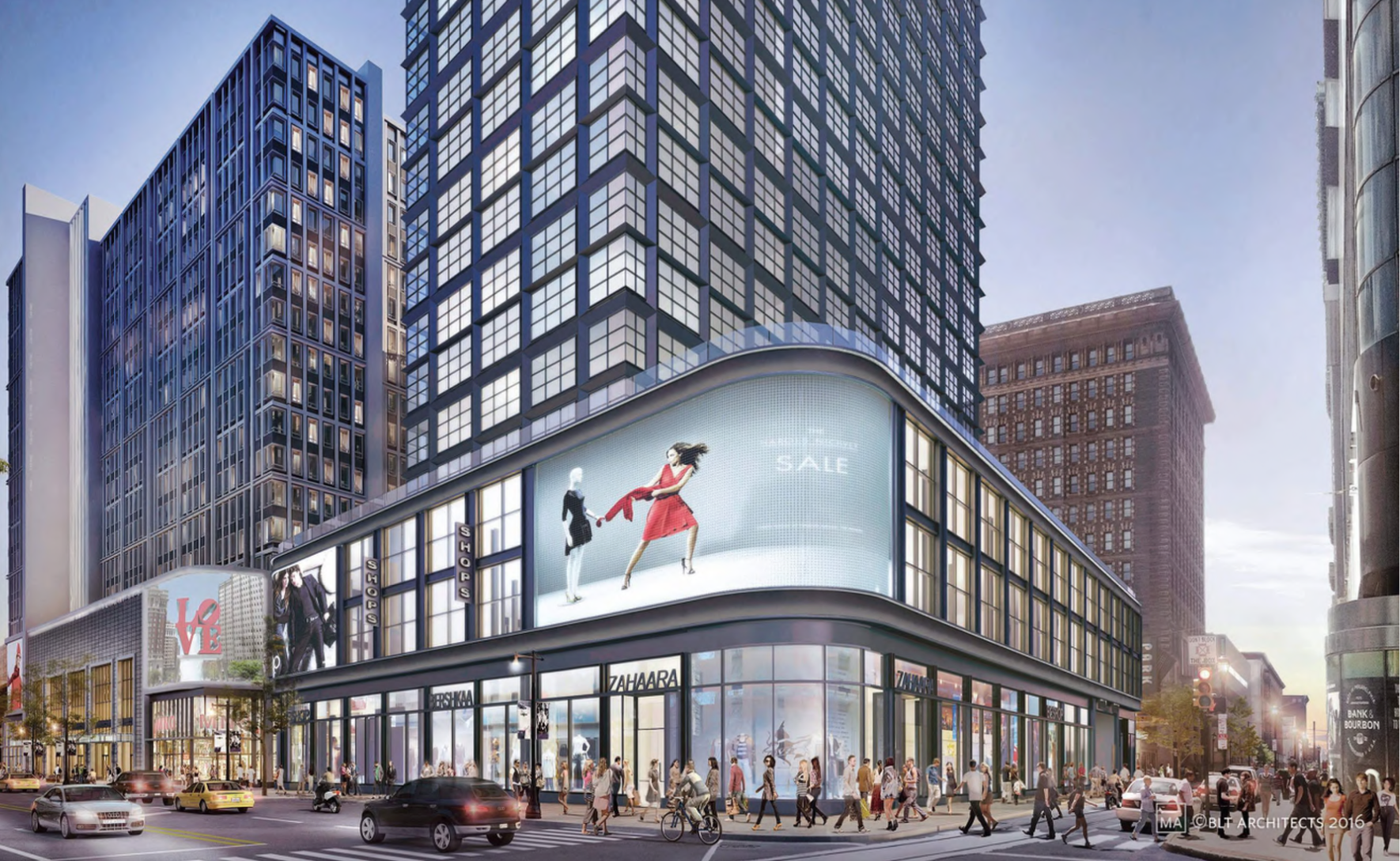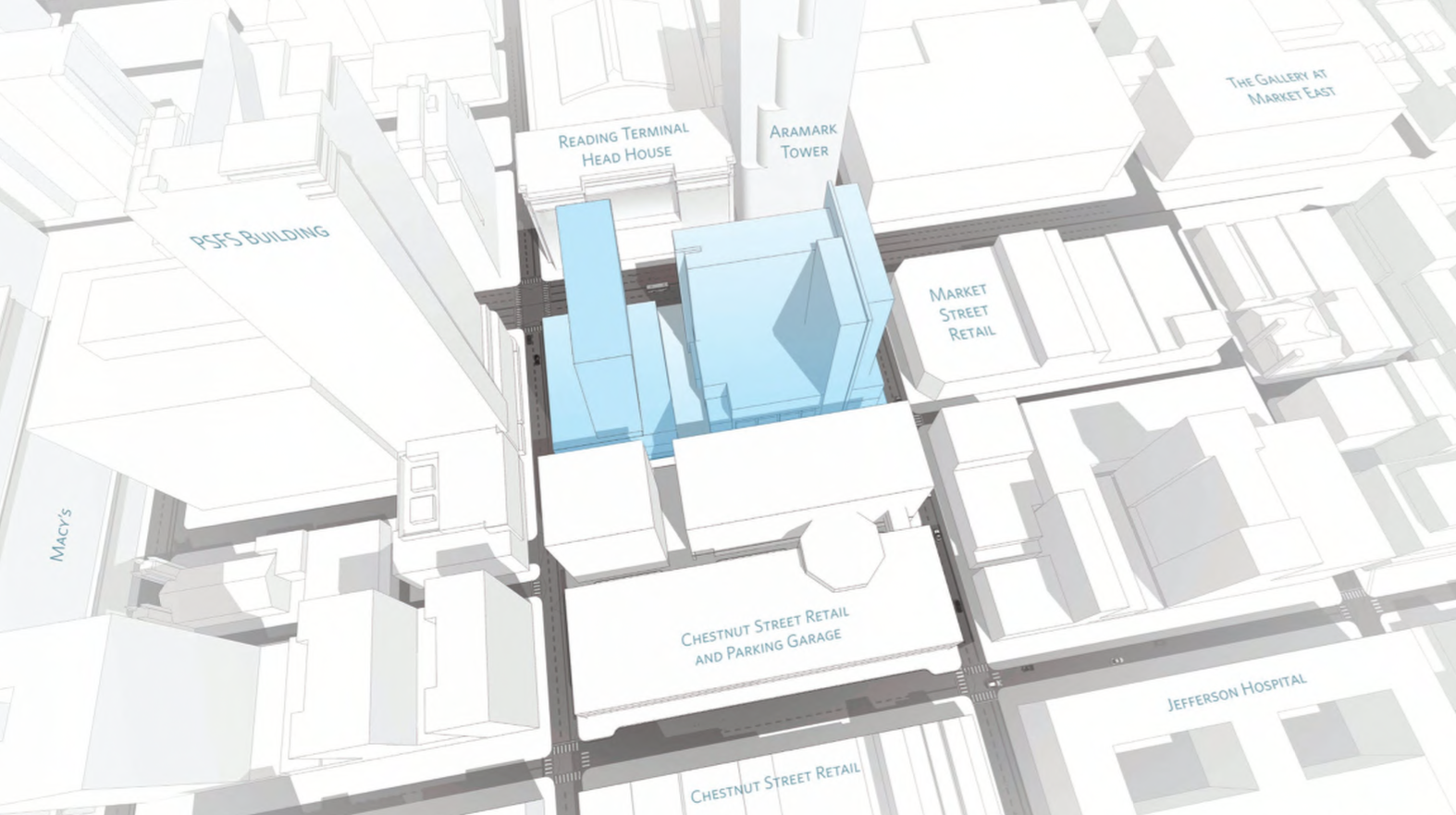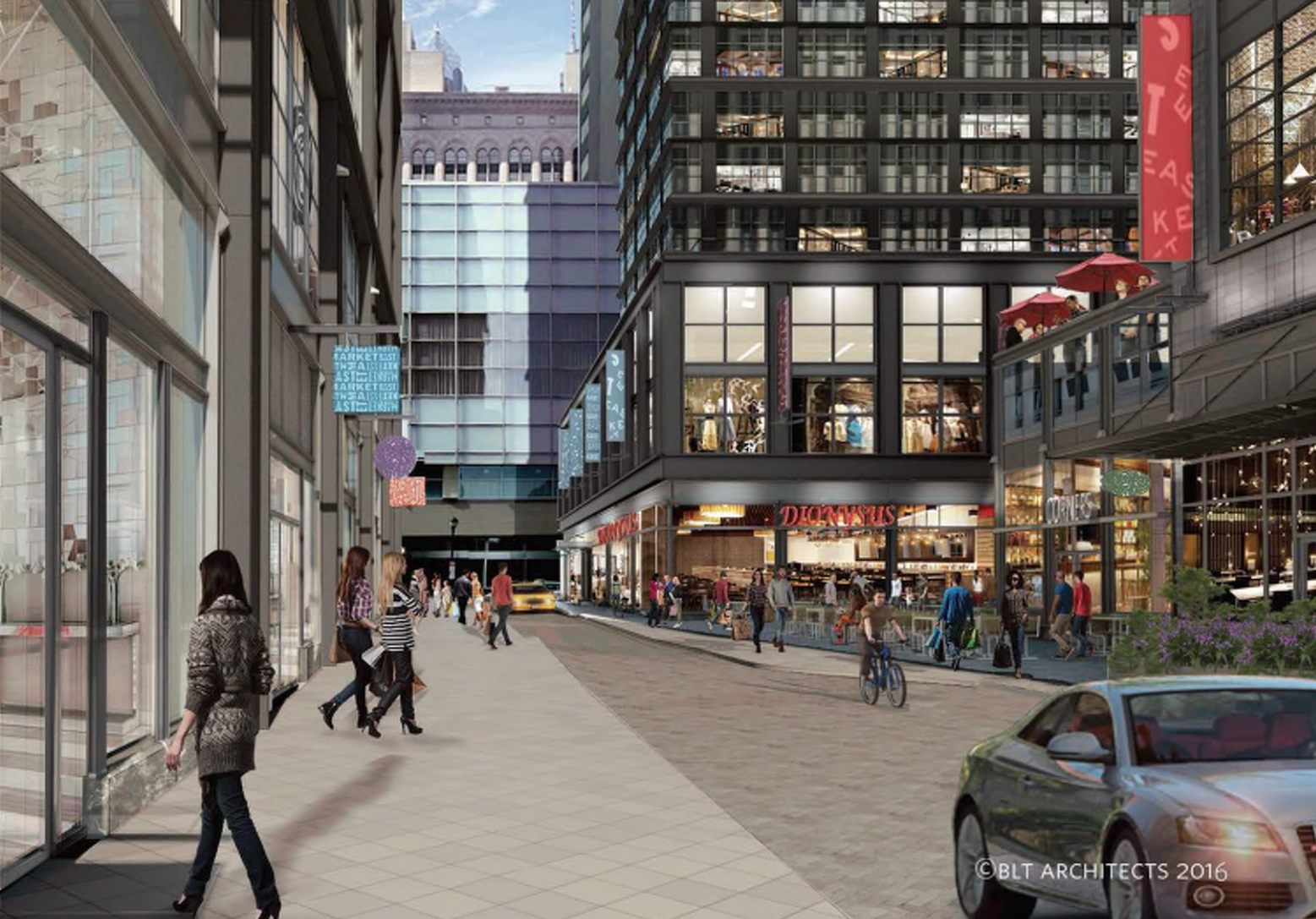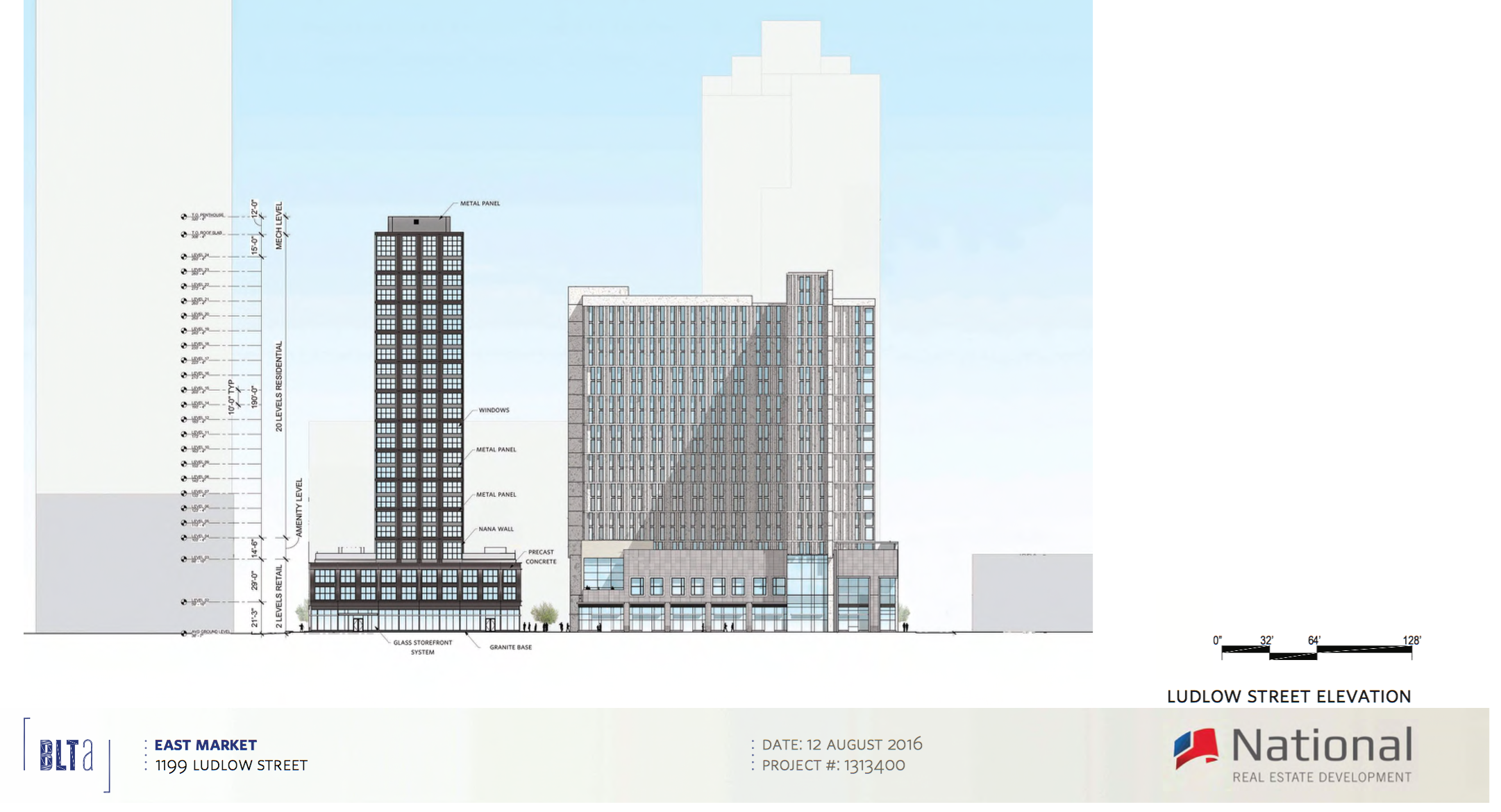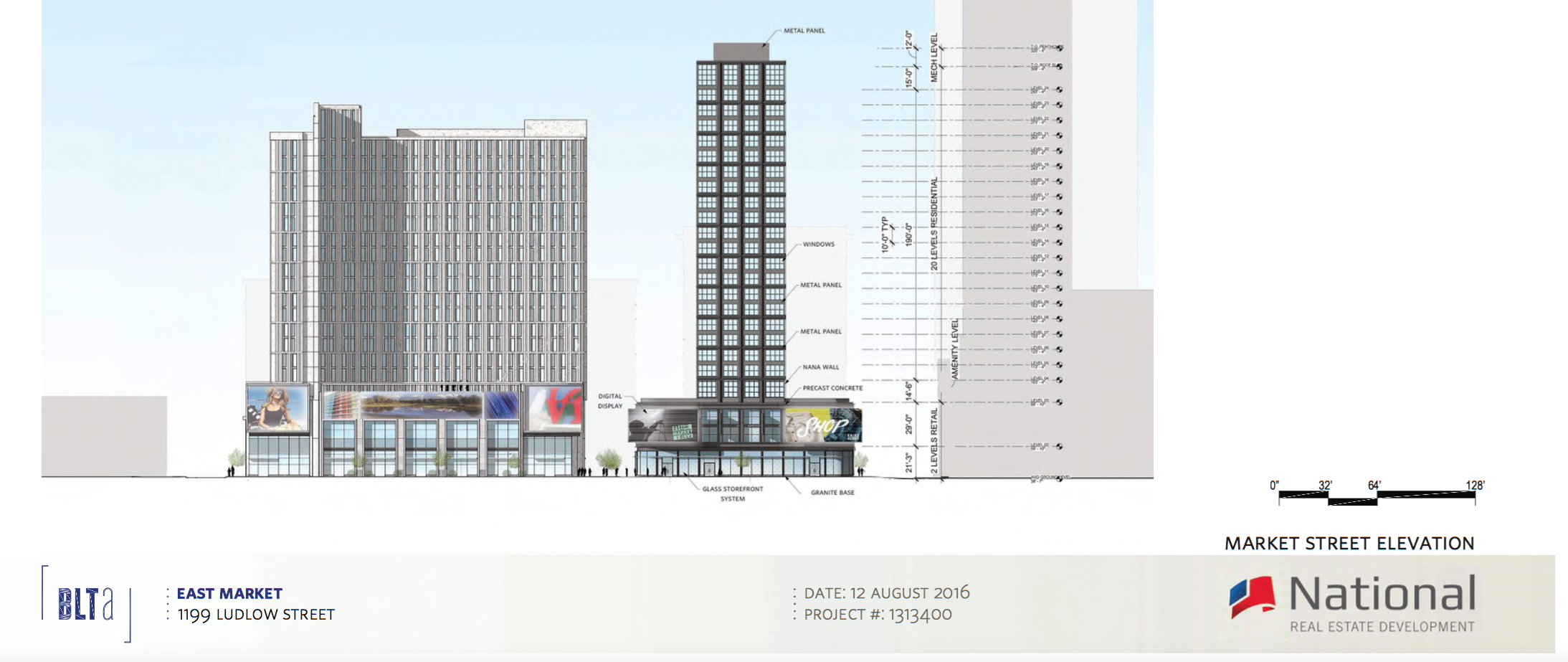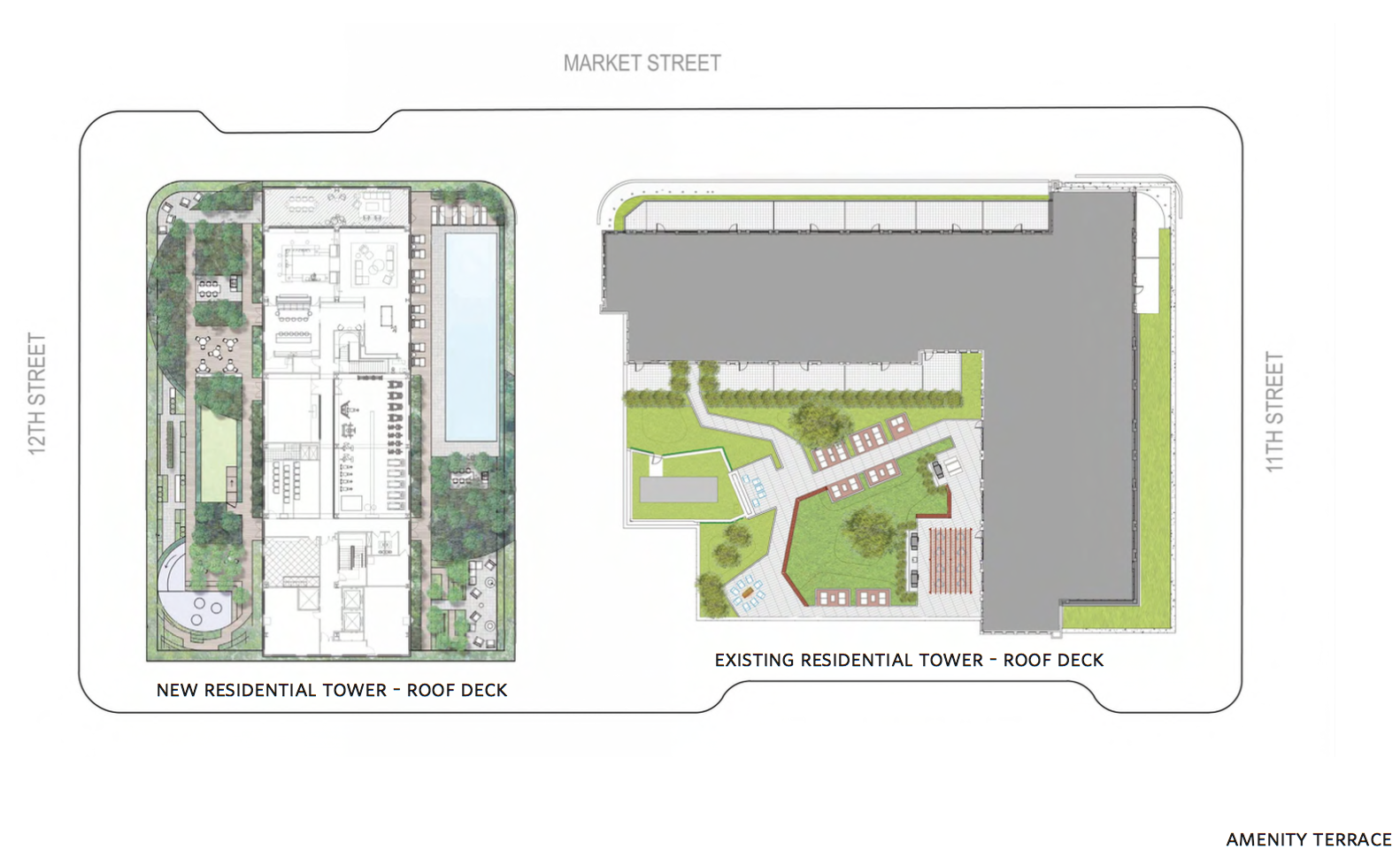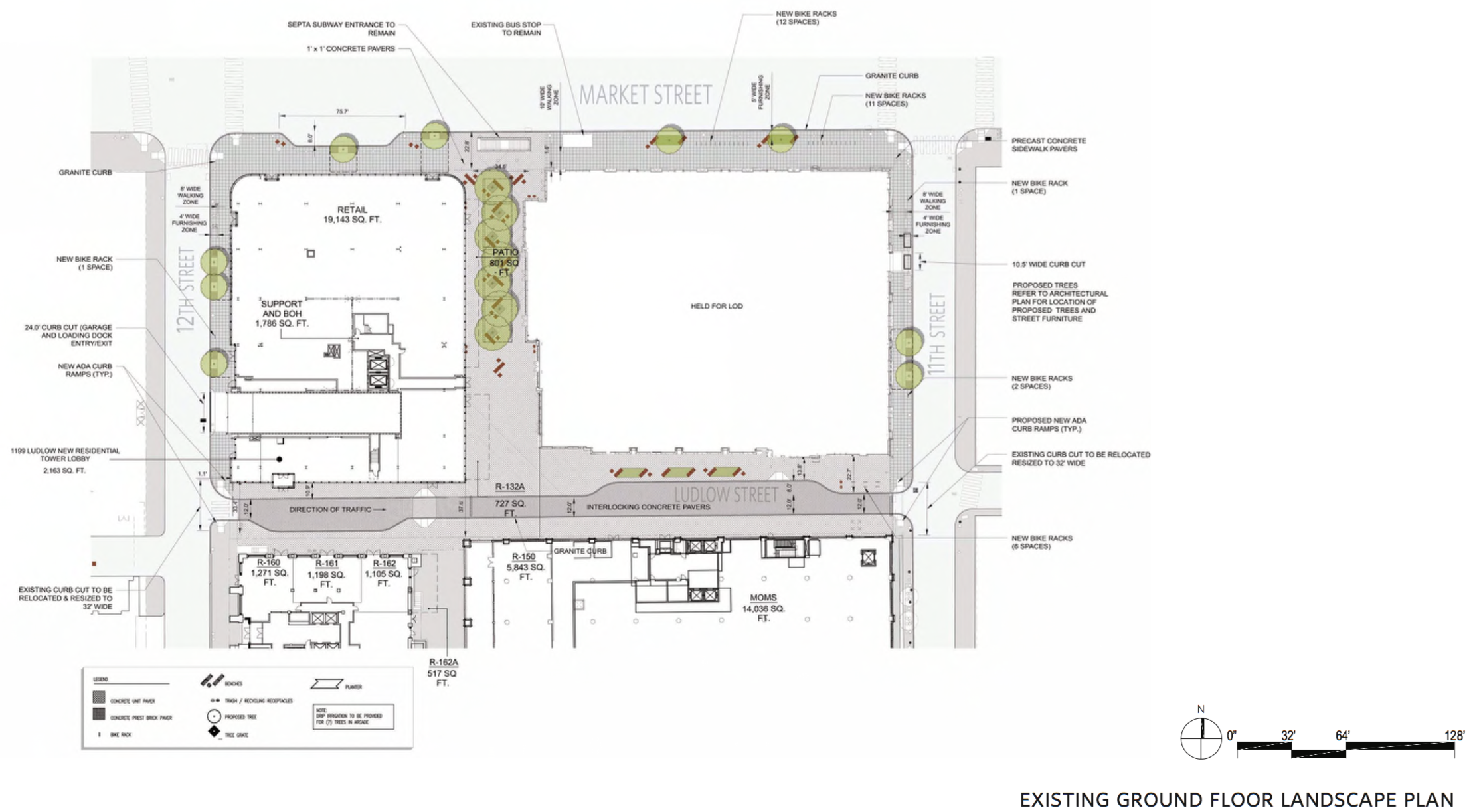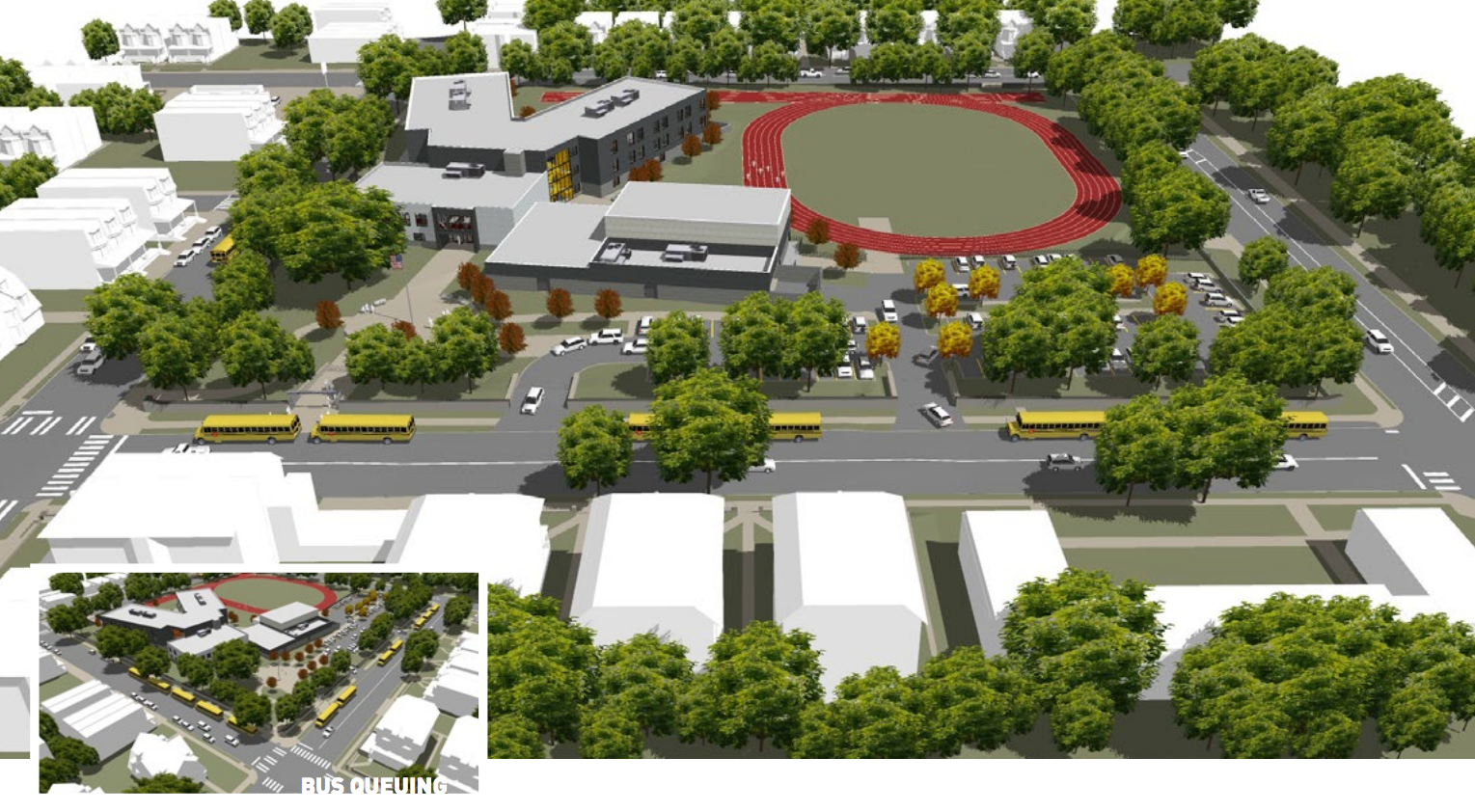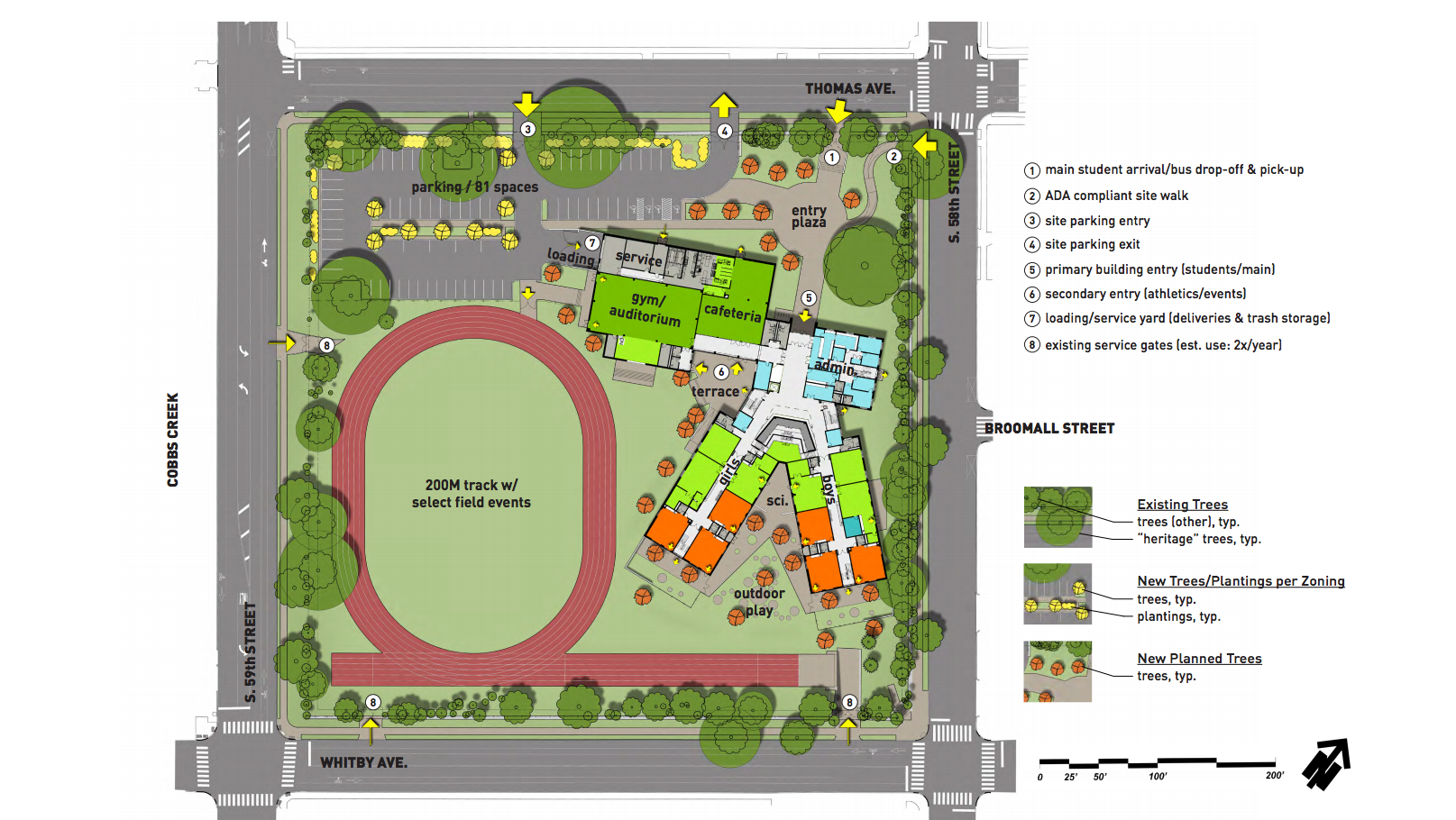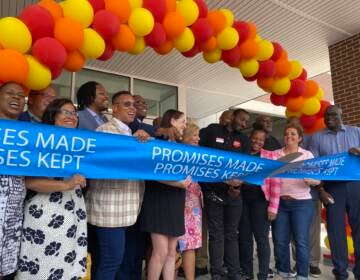Design Committee asks PHA to improve design for new headquarters but supports Cobbs Creek, East Market, and Winchester Park projects
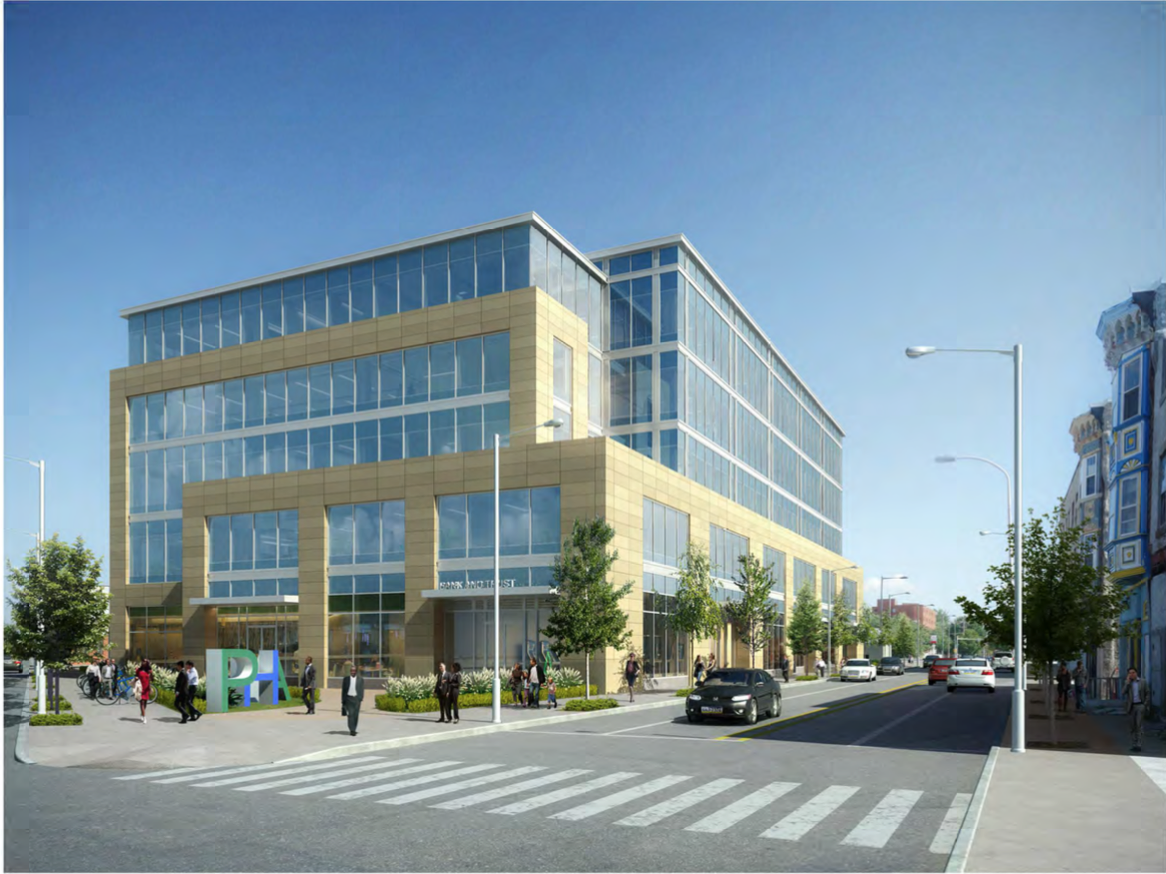
The controversies surrounding the Philadelphia Housing Authority’s (PHA) ambitious plans for the Sharswood neighborhood repeatedly interrupted Tuesday afternoon’s Civic Design Review Committee review of the agency’s plans to build itself a new headquarters as part of the Sharswood-Blumberg Transformation Plan.
Despite the relative placidity that met the other three projects on the docket, heated words were exchanged between numerous parties in regards to PHA’s planned relocation from Center City to 2013 Ridge Avenue. The site is a wedge shaped vacant lot on Ridge Avenue just south of Jefferson Street. The building itself is five-story rectangular structure of glass and terracotta, with space for a cafe and another small business on Ridge Avenue.
Tuesday’s hearing was the first before the Civic Design Review Committee (CDR) for the housing authority’s new headquarters. The proposed project received negative reviews from two vocal members of the committee, which then utilized its only real power by asking the architects to consider their criticisms and come before them again next month. The committee voted 4-to-2 to bring PHA’s plans up for review again, with Michael Johns, senior executive vice president at the agency, recusing himself.
“The design and placement of the building makes me feel very, very uncomfortable,” said architect Cecil Baker. “It should have all the softness and grace of working in a community that is inflected by issues beyond our control. If we can’t get PHA to act in a responsible design than who can we ask? This building is just a big rectangle plopped down, I know because it’s the cheapest damn thing you can build. …what I’m looking at right now could be in Cherry Hill.”
Baker’s critique, backed by committee chair Nancy Rogo Trainer, offered the only design-related barbs of the proceeding. Trainer repeatedly tried to steer the comments towards the core focus of CDR hearings, physical design of the buildings and grounds in question, subjects which both RCO representatives and lawyers repeatedly steered away from.
Many of the other interjections were related to the fate of the larger project, or to the process and rules of the committee, culminating in one community member storming out of the room.
The four community representatives who spoke offered clashing perspectives on the merits of the project. Vivian VanStory, a North Philadelphia resident and founder of the Community Land Trust Corporation, argued that there hadn’t been enough community input and that civic engagement efforts hadn’t been adequately promoted. Judith Robinson of the 32nd Democratic Ward RCO spoke passionately against the new headquarters—“We are being saturated, overrun with PHA!”
Reverend Lewis C. Nash Sr., of Faith and Deliverance Outreach Ministries, offered enthusiastic assent (and one of two votes for moving the project beyond the review committee), countering that Robinson did not represent the Sharswood community.
After the negative vote from the review committee, Nancy Rogo Trainer and Ballard Spahr’s Matthew N. McClure exchanged a verbal volley, acting as the lawyer for PHA. He pushed for the committee to change its vote because of the agency’s tight timetable for moving out of its current headquarters. He argued that they needed to be into the new building by the first quarter of 2018.
“We will continue to work with the staff [of the Planning Commission], but Director [of Planning and Development Anne] Fadullon will agree with what I am saying,” said McClure. “But today is the first time we have received these comments even though we have met with staff five different times on this project—let me finish—putting us back a month will have dire consequences to the timeline. We ask that you do not put us off another month.”
Trainer did not accept this reasoning, explaining to McClure —without looking at him, despite his being seated at the same table at the time—the rule of the Civic Design Review Committee.
“We are not the staff, we are the Civic Design Review, we are charged with doing the job that we are now doing,” said Trainer. “There is always the possibility of coming back twice, so if time is of the essence I suggest developers assume they will have to come back a second time. So the vote stands, we’ll see you again next month.”
The rest of the projects on the schedule were approved with little strife. The addition of another residential tower with 240 units at 1199 Ludlow Street (better known at the East Market project already well underway) met the committee’s approval in a mere 15 minutes. “This is probably the shortest review ever,” marveled Trainer.
This second tower proposed for East Market will be a 21-story residential buidling will rise above of a two-story retail base that is topped with an “amenity terrace” for residents.
The expansion of the Archdiocese’s Immaculate Mary Center, a rehabilitation and healthcare facility in the Far Northeast, mostly met with accolades on the project’s second stop before the committee. During the presentation, architect John Baumgarten revealed that his plans were revised to meet concerns expressed during the last meeting. Chief among the alterations, the height of the new structure was dropped from four stories to three (he elongated it to make up lost space). Other alterations included moving it significantly back from Colfax Street, in accordance with the committee’s previous recommendations.
The project still encountered opposition from one of the RCOs at the meeting, the Winchester Park Civic Association, whose representative feared the effect the project would have on property values in the neighborhood and expressed doubt about the architect’s claim that neighborhood parking would be largely unaffected.
The committee approved it anyway, regarding such fears as outside their purview.
The last project of the day covered the Southwest Leadership Academy Charter School’s new campus at 1300 S. 58th street on the edge of Cobbs Creek. The six-acre property, a former Baptist orphanage and church, has sat largely unused for decades. The committee and community representatives were very favorable towards the project and voted to approve it. The only comments from the RCOs and other representatives were related to some confusion over where buses might be parking.
“It’s a good project, it just needs a little tweaking,” said Kathryn Davis, a 78-year-old resident of the neighborhood. Her chief concern was to ensure that the charter’s leaders understood the importance of their promise to open the grounds to the community outside of school hours.
“We’ve been waiting so long for the opportunity to have something in our neighborhood,” said Davis, “not just for the children—although God knows they need it—but so do I.”
WHYY is your source for fact-based, in-depth journalism and information. As a nonprofit organization, we rely on financial support from readers like you. Please give today.



